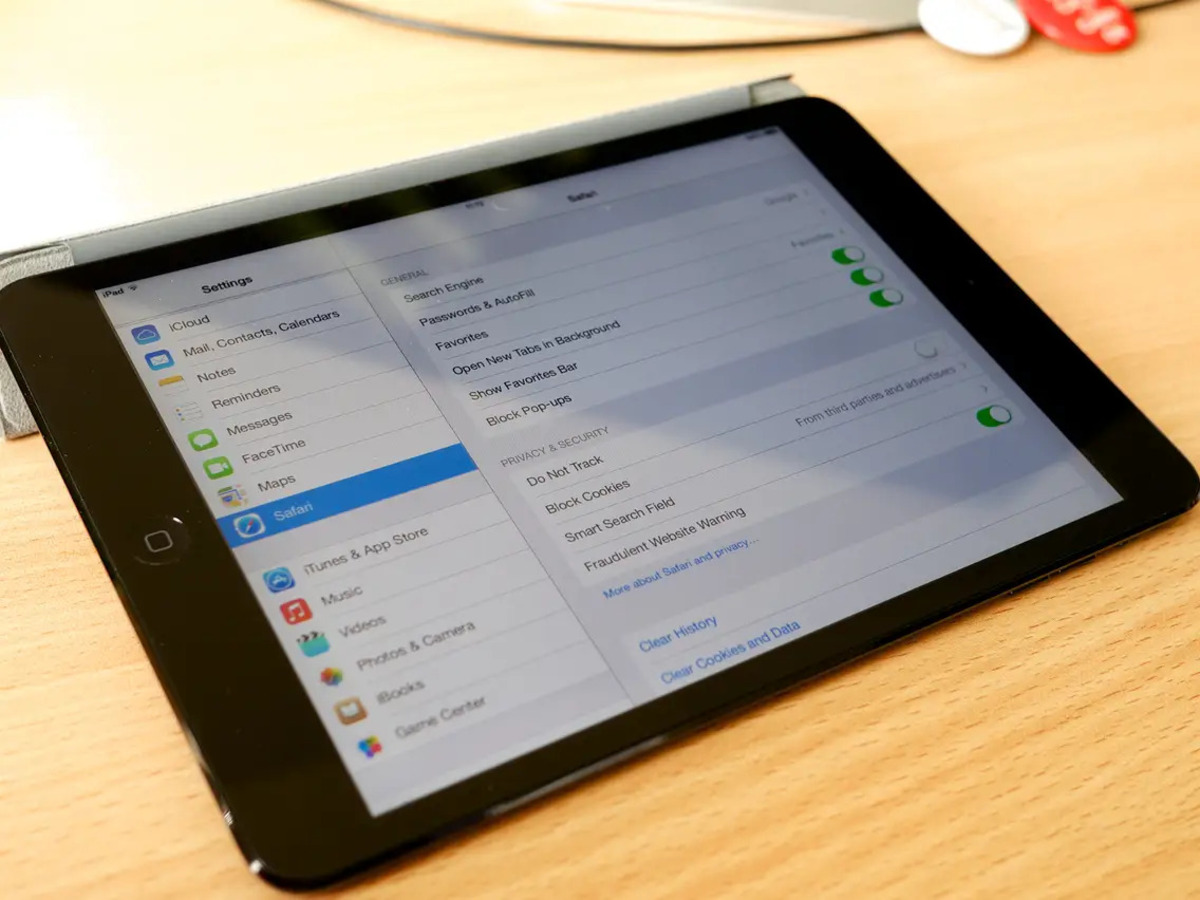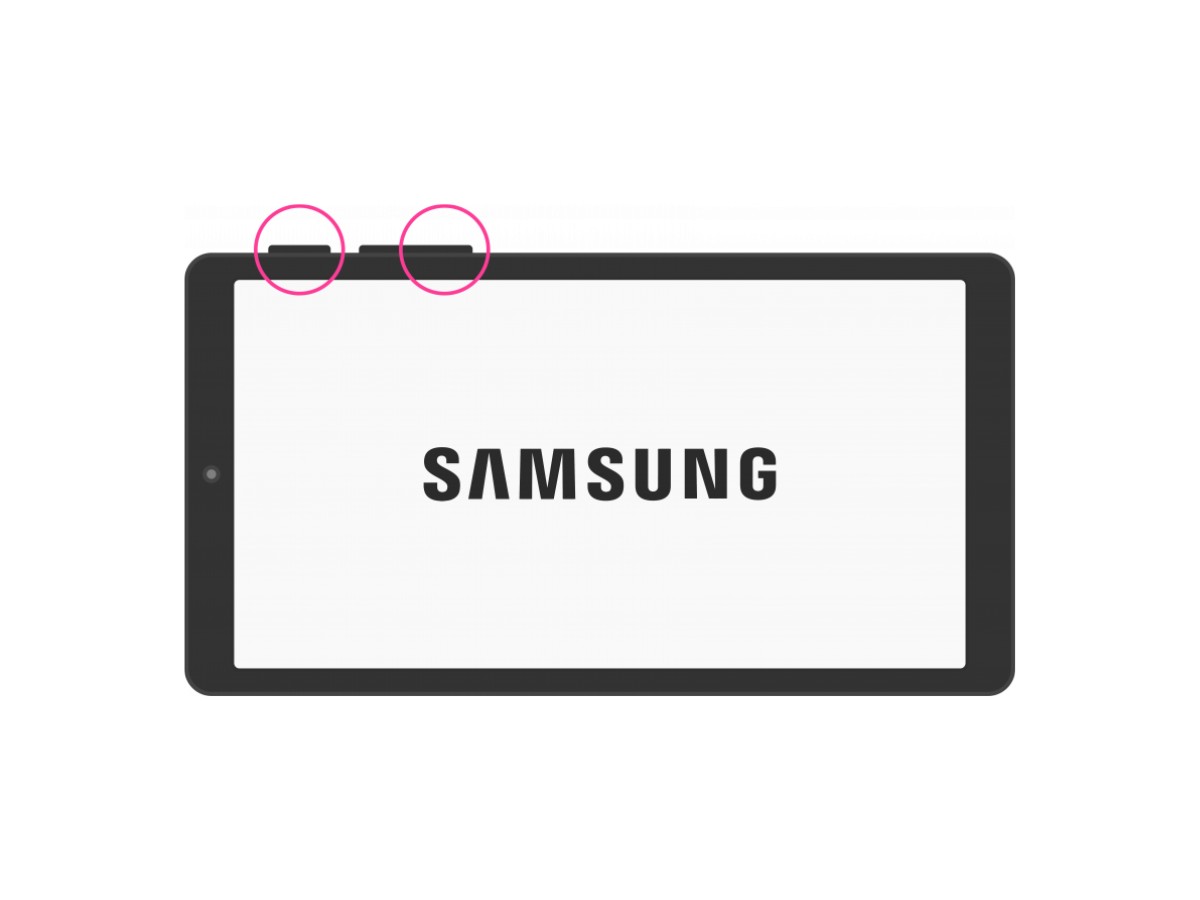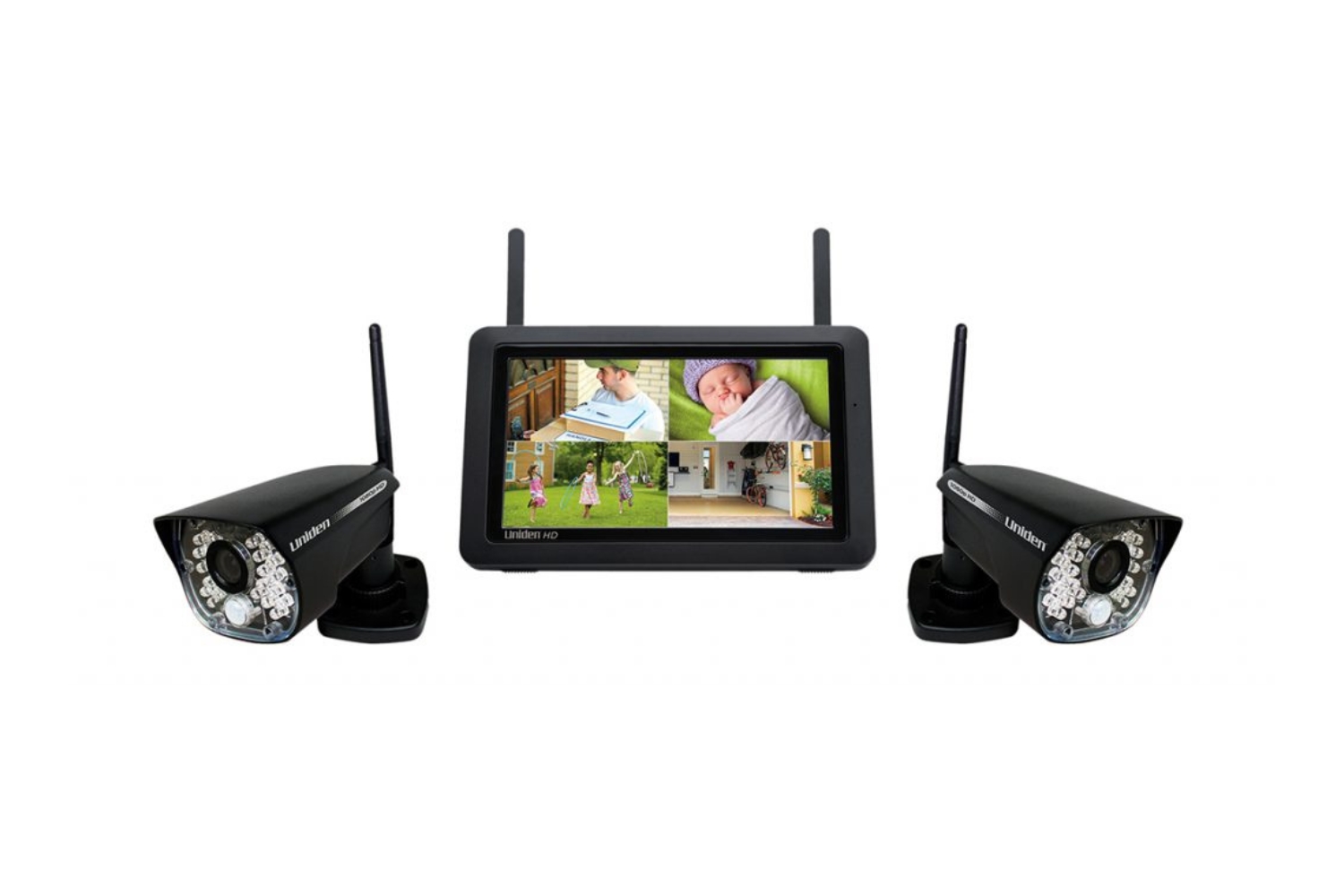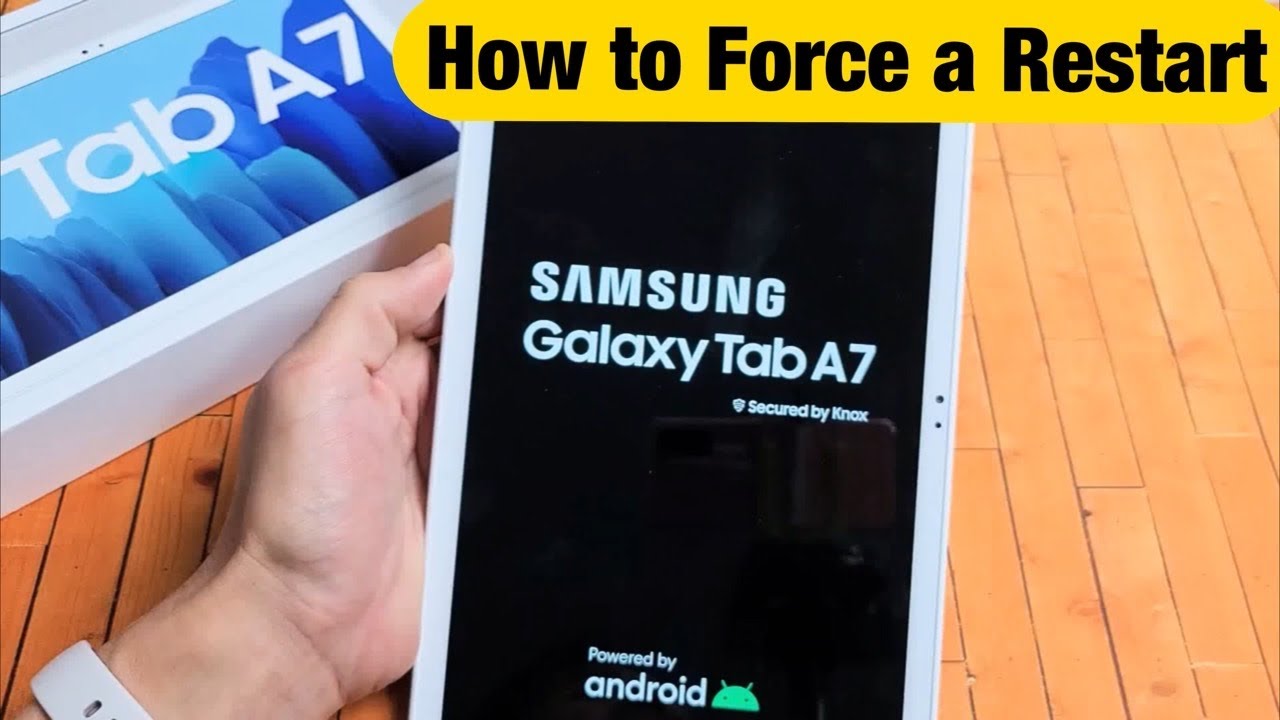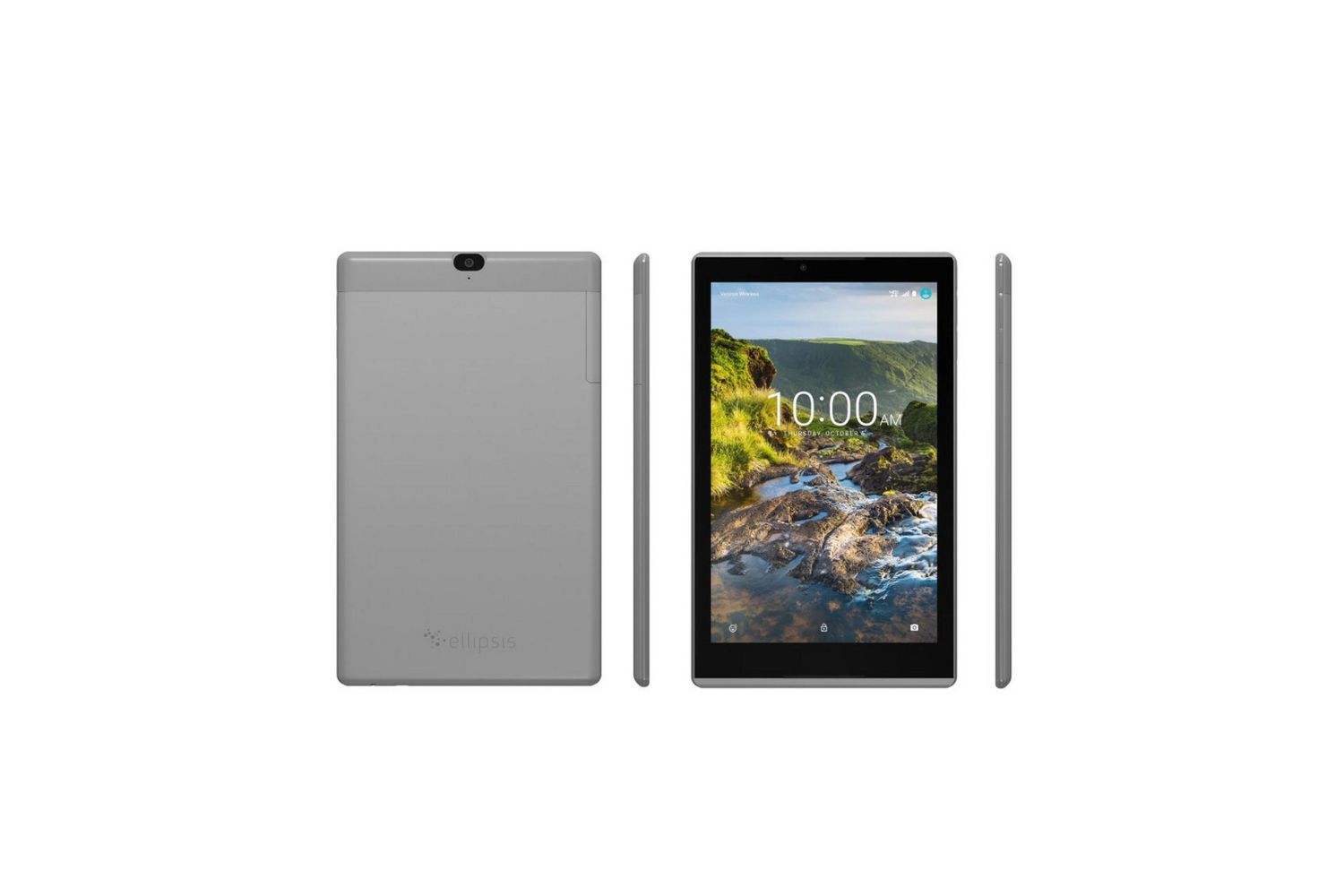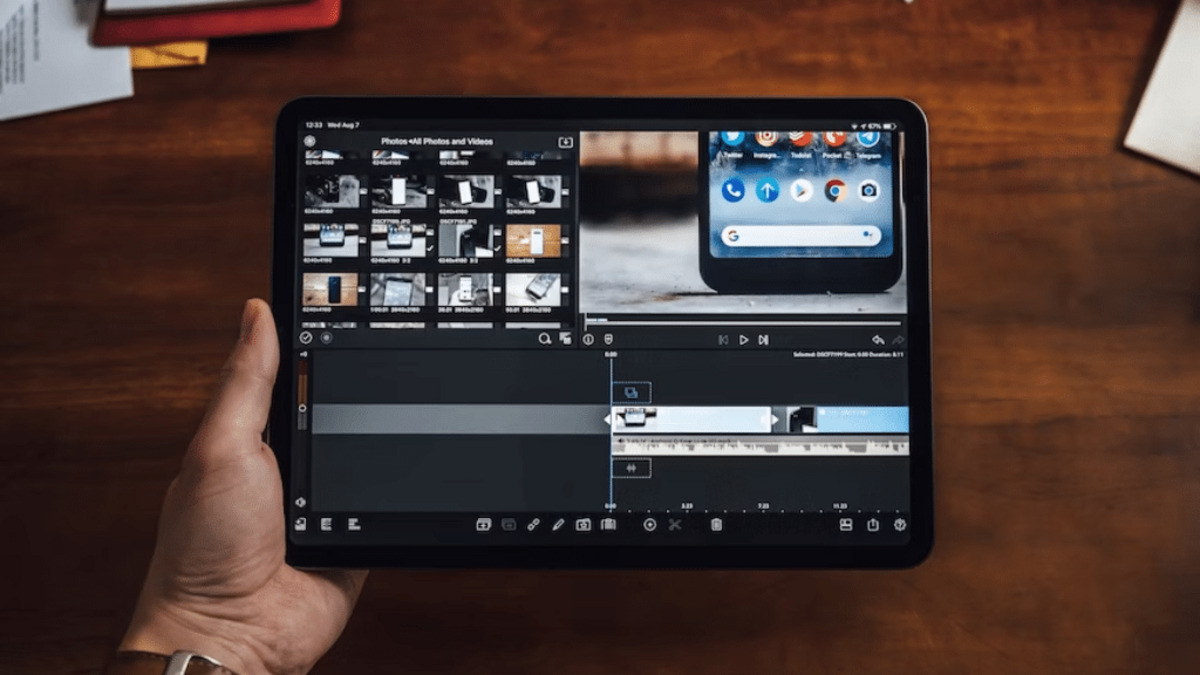Introduction
Welcome to our guide on troubleshooting a frozen tablet. If you’ve ever experienced the frustration of a frozen tablet, you’re not alone. It’s a common issue that can be caused by a variety of factors, from overheating to software glitches.
A frozen tablet can be incredibly inconvenient, especially if you rely on it for work, entertainment, or communication. Fortunately, there are several steps you can take to resolve the problem and get your tablet back up and running smoothly.
In this article, we will explore the common reasons behind a frozen tablet and provide you with practical tips on how to fix it. Whether you own an Android or iOS tablet, the principles discussed here can be applied to most devices. So, without further ado, let’s dive into the possible causes and solutions for a frozen tablet.
It’s important to note that troubleshooting a frozen tablet requires some technical knowledge and patience. If you’re uncomfortable performing the steps yourself, it’s advisable to seek assistance from a professional or contact the manufacturer’s customer support.
Before we delve into the troubleshooting steps, let’s first understand some of the common reasons that can cause your tablet to freeze. By identifying the underlying cause, you’ll be better equipped to resolve the issue effectively.
Common Reasons for a Frozen Tablet
A frozen tablet can be caused by various factors. Understanding these common reasons will help you narrow down the issue and find the appropriate solution. Here are some of the most prevalent causes of a frozen tablet:
- Overheating: Excessive heat can cause your tablet to freeze. This can happen when the device is exposed to direct sunlight for an extended period or if you’re performing resource-intensive tasks that push the tablet’s processing capabilities to the limit. Overheating can lead to performance issues and freeze your tablet.
- Software Glitches and Bugs: Like any other electronic device, tablets can experience software glitches and bugs. These issues can disrupt the normal functioning of your tablet, leading to it freezing. Common culprits include incompatible apps, outdated software, or corrupted system files.
- Battery Issues: If your tablet’s battery is running low or experiencing problems, it may cause the device to freeze. A weak or faulty battery may not provide sufficient power for the tablet to function properly, leading to freezes and unresponsiveness.
- Insufficient Memory: Tablets have limited internal memory, and if it gets close to full capacity, it can affect the device’s performance. When the tablet’s memory becomes overwhelmed, it may freeze or become slow in responding to your commands.
- Full Storage: In addition to the internal memory, tablets also have storage space for files such as photos, videos, and documents. If these storage spaces become full, it can cause your tablet to freeze. Clearing up space by removing unnecessary files can help resolve this issue.
- Unresponsive Touchscreen: Sometimes, a frozen tablet may appear that way because the touchscreen is unresponsive. This can occur due to physical damage, a software issue, or a problem with the tablet’s firmware. In such cases, the tablet may appear frozen, but the underlying issue lies with the touchscreen.
- Outdated Software: Using outdated software on your tablet can lead to compatibility issues and performance problems. In some cases, it can cause the tablet to freeze. It’s important to regularly update your tablet’s software to ensure optimal performance and stability.
These are some of the common reasons why your tablet may freeze. However, it’s important to note that there can be other underlying issues specific to your device. In the next section, we will discuss various troubleshooting methods you can try to unfreeze your tablet and get it working again.
Overheating
Overheating is a common cause of a frozen tablet. Tablets generate heat during regular use, but excessive heat can cause the device to freeze or become unresponsive. Here are a few reasons why your tablet may overheat:
1. Exposure to Direct Sunlight: Leaving your tablet exposed to direct sunlight for extended periods can significantly increase its temperature. Avoid using your tablet in direct sunlight or use a shade or cover to protect it.
2. Resource-Intensive Tasks: Running multiple apps or performing tasks that require significant processing power can lead to overheating. Resource-intensive activities like gaming, video editing, or running demanding apps can push your tablet’s hardware to its limits, resulting in overheating.
3. Continuous Usage: Using your tablet for an extended duration, especially when performing intensive tasks, can cause it to heat up. Continuous usage without giving your tablet time to cool down can lead to overheating issues.
4. Case or Cover Issues: Your tablet case or cover may affect its ability to dissipate heat properly. Some cases, especially ones that cover the tablet’s back completely, can trap heat, leading to overheating. Consider using a case that allows for proper ventilation and heat dissipation.
5. Faulty Hardware: In some cases, faulty hardware components, such as a malfunctioning battery or a defective cooling system, can cause excessive heat buildup, leading to overheating. If you suspect a hardware issue, it’s best to consult a professional for assistance.
If your tablet is overheating and freezing, here are some steps you can take to resolve the issue:
1. Give it a Break: If you’ve been using your tablet for an extended period, give it some time to cool down. Turn it off and let it rest for a while before using it again. Avoid using resource-intensive apps or games in succession.
2. Ensure Proper Ventilation: Remove the tablet’s case or cover temporarily to allow better airflow and heat dissipation. Avoid placing the tablet on surfaces that can trap heat, such as blankets or pillows.
3. Close Unnecessary Apps: Close any apps running in the background that you’re not actively using. Background processes can consume system resources and contribute to overheating. You can typically close apps by swiping them away or using the app manager on your tablet.
4. Update Software: Keeping your tablet’s software up to date can help optimize its performance and address any known issues related to overheating. Check for software updates in the settings menu and install them if available.
5. Avoid Intense Tasks: Avoid running resource-intensive tasks or apps that push your tablet’s processing capabilities to the limit. If possible, close any unnecessary apps while using resource-intensive ones to alleviate stress on the tablet’s hardware.
If the above steps don’t resolve the overheating issue and your tablet continues to freeze, it’s advisable to consult the manufacturer’s customer support or seek professional assistance. Remember that overheating can pose a risk to your tablet’s internal components, so it’s important to address the issue promptly.
Software Glitches and Bugs
Software glitches and bugs are another common cause of a frozen tablet. Tablets, like any other electronic device, rely on software to function properly. However, sometimes, issues can arise that disrupt the normal operation of the software, resulting in freezing or unresponsiveness. Here are some common software-related causes of a frozen tablet:
1. Incompatible Apps: Certain apps may not be compatible with your tablet’s operating system or hardware specifications. When you attempt to run incompatible apps, it can lead to software conflicts and cause the tablet to freeze. Check for app compatibility before installing them from app stores.
2. Outdated Software: Using outdated versions of the operating system or apps on your tablet can introduce bugs or compatibility issues. Developers regularly release updates to address these issues and improve performance. It’s crucial to keep your tablet’s software up to date to minimize the risk of freezing due to outdated software.
3. Corrupted System Files: Over time, system files on your tablet can become corrupted due to various factors, including improper shutdowns, malware, or system errors. Corrupted system files can disrupt the functioning of the software, leading to freezing or crashes. Performing a troubleshooting step like clearing the cache can help resolve this issue.
4. Malware or Virus Infections: Malicious software or virus infections can cause instability in your tablet’s software, resulting in freezing or unresponsiveness. It’s important to have reliable antivirus software installed on your tablet and regularly scan for malware or viruses.
5. App Clashes: Running multiple apps simultaneously or switching between them quickly can sometimes lead to clashes between different processes, causing the tablet’s software to freeze. Restarting the tablet or closing unnecessary apps can resolve this issue.
If you suspect software glitches or bugs as the cause of your tablet freezing, here are some steps you can take to resolve the issue:
1. Restart the Tablet: A simple restart can often resolve minor software glitches and refresh the system. Press and hold the power button on your tablet, then select “Restart” or “Reboot” from the power options.
2. Force Restart: If your tablet is completely unresponsive, a force restart may help. Depending on your tablet model, this is usually done by pressing and holding a combination of buttons, such as the Power and Home buttons, for a few seconds until the device restarts.
3. Clear Cache: Clearing the cache can help resolve issues caused by corrupted or outdated files. Go to the tablet’s settings, find the “Storage” or “Storage & USB” option, then select “Cached Data” and clear it. This process may vary slightly depending on your tablet’s operating system.
4. Removing Unnecessary Apps and Files: Uninstalling apps that you no longer use and deleting unnecessary files can help free up storage space and reduce the burden on your tablet’s hardware and software. This can help improve overall performance and reduce the likelihood of freezing.
5. Updating the Software: Check for software updates in the tablet’s settings menu. Developers release updates to fix bugs, improve stability, and address various performance issues. Install any available updates to ensure your tablet is running the latest version of the operating system and apps.
If the above steps don’t resolve the freezing issue, you may need to consider a factory reset as a last resort. However, note that a factory reset erases all data and settings on your tablet, so be sure to back up any important files before proceeding. If the freezing issue persists even after a factory reset, it’s advisable to contact the manufacturer’s customer support for further assistance.
Battery Issues
Battery issues can also be a common cause of a frozen tablet. If your tablet’s battery is running low or experiencing problems, it can lead to freezing or unresponsiveness. Here are a few battery-related issues that may cause your tablet to freeze:
1. Low Battery Level: When your tablet’s battery level is critically low, it may not have enough power to support its normal operation. This can result in freezing or unexpected shutdowns. It’s essential to regularly charge your tablet to ensure a sufficient battery level.
2. Faulty Battery: A faulty or damaged battery can cause various issues, including freezing or erratic behavior of the tablet. If you suspect a faulty battery, contact the manufacturer’s customer support or take your tablet to an authorized service center for evaluation and possible replacement.
3. Battery Drain during Intensive Tasks: Performing resource-intensive tasks, such as gaming or video streaming, can result in rapid battery drain. If your tablet’s battery drains too quickly and reaches low levels during these activities, it may cause freezing or sudden shutdowns.
4. Incompatible Charging Accessories: Using incompatible or low-quality charging accessories can have a negative impact on your tablet’s battery performance. Cheap or counterfeit chargers and cables may not provide the necessary power output, leading to issues like slow charging, quick battery drain, or even freezing.
If you suspect that battery issues are causing your tablet to freeze, here are some steps you can take to address the problem:
1. Charge the Tablet: Connect your tablet to a reliable power source using the original charging cable and adapter. Ensure that the charging cable is securely connected. Let the tablet charge for a sufficient amount of time. Once the battery level is adequate, try powering on the tablet again to see if the freezing issue is resolved.
2. Replace the Battery (If Applicable): If you have a removable battery, and you are experiencing frequent freezing issues, it may be necessary to replace the battery. Contact the manufacturer’s customer support or a reputable service center to inquire about battery replacement options.
3. Check for Software Updates: Software updates often include battery optimization improvements. Go to the tablet’s settings menu and check for any available updates. Installing the latest software version can help resolve battery-related issues and improve overall performance.
4. Avoid Resource-Intensive Tasks: Performing tasks that place a heavy demand on your tablet’s battery, such as gaming or video streaming, can accelerate battery drain and lead to freezing. Limit your usage of resource-intensive apps and activities, especially when your battery level is low.
5. Use Genuine Charging Accessories: To ensure optimal performance and to avoid battery-related issues, always use genuine charging accessories that are recommended by the tablet’s manufacturer. Genuine accessories provide the correct power output and are designed to work seamlessly with your tablet.
If you have tried the above steps and are still experiencing freezing issues related to the tablet’s battery, it’s recommended to reach out to the manufacturer’s customer support for further assistance. They can provide specific guidance based on your tablet model and help diagnose any underlying battery problems.
Insufficient Memory
Insufficient memory can be another common cause of a frozen tablet. Tablets have limited internal memory, and when it gets close to full capacity, it can affect the device’s performance and lead to freezing or lagging. Here are a few reasons why your tablet may have insufficient memory:
1. Multiple Apps and Processes: Running several apps simultaneously or having numerous background processes can consume a significant amount of memory. If your tablet’s memory is overwhelmed by these processes, it can cause freezing or slow responsiveness.
2. Large App Sizes and Data: Some apps, particularly gaming or multimedia apps, can be quite large in size. Installing such apps, along with their associated data files, can quickly eat up your tablet’s memory. This can lead to insufficient memory and subsequent freezing issues.
3. Cached Data Buildup: Over time, cached data from apps and websites can accumulate in your tablet’s memory. While cached data is designed to improve performance by storing frequently accessed information, excessive buildup can consume valuable memory resources and cause freezing or slowdowns.
If you suspect that insufficient memory is causing your tablet to freeze, here are some steps you can take to address the issue:
1. Close Unnecessary Apps: Close any apps running in the background that you’re not actively using. This will free up memory resources and reduce the strain on your tablet’s performance. You can often close apps by swiping them away or using the app manager function on your tablet.
2. Clear App Cache and Data: Some apps can accumulate a large amount of cache or data over time. Go to the tablet’s settings, find the “Apps” or “Applications” section, and select each app individually to clear its cache or data. This process may vary slightly depending on your tablet’s operating system.
3. Remove Unnecessary Apps and Files: Uninstall apps that you no longer use or need. Also, delete any unnecessary files, such as old documents, photos, or videos, to free up storage space. This will not only provide more room for your tablet’s memory but also improve overall performance.
4. Transfer Files to External Storage: If your tablet has expandable memory or supports external storage, consider moving files like photos, videos, or documents to an external SD card. This can help free up internal memory and prevent it from reaching its capacity limit.
5. Use Cloud Storage Options: Utilize cloud storage services, such as Google Drive or Dropbox, to store files instead of keeping them directly on your tablet. This can help alleviate the burden on your tablet’s internal memory and provide easy access to your files from multiple devices.
6. Restart or Power Cycle: Restart your tablet or perform a power cycle regularly. This can help free up memory resources that may have been tied up by apps or processes. A fresh start can also help clear any temporary glitches or issues causing freezing.
If the above steps don’t resolve the freezing issue and you continue to experience insufficient memory-related problems, it may be worth considering upgrading to a tablet with higher storage capacity or seeking professional assistance to further diagnose the issue.
Full Storage
Having full storage on your tablet can cause various issues, including freezing or unresponsiveness. Tablets typically have limited internal storage space, and when it becomes full, it can affect the device’s performance. Here are a few reasons why your tablet may have full storage:
1. Large Files and Media: Storing large files, such as high-definition videos or high-resolution photos, can quickly fill up your tablet’s storage space. These files can take up a significant amount of memory, leading to insufficient storage and potential freezing issues.
2. App Installations: Installing numerous apps on your tablet can consume a substantial portion of its storage space. Each app brings with it essential files and data, which can add up over time. If you have many apps installed, it can contribute to a full storage situation.
3. App Cache and Temporary Files: Apps generate temporary files and cache data as you use them. While cache files help enhance app performance, excessive cache buildup can consume valuable storage space. Over time, these files accumulate and contribute to a full storage scenario.
4. System Files: Your tablet’s operating system and system files take up a certain amount of storage space. As new updates and features are introduced, the size of these system files can increase. If your tablet has limited internal storage, it can quickly fill up due to the growing size of these files.
To address a full storage issue and prevent freezing, consider the following steps:
1. Delete Unnecessary Files and Apps: Start by cleaning up your tablet and removing any unnecessary files, such as old photos, videos, or documents. Uninstall apps that you no longer use or need. This will reclaim storage space and help improve overall performance.
2. Move Files to External Storage or Cloud: If your tablet supports external storage or cloud storage options, consider moving less frequently accessed files to these alternative storage locations. Moving files, such as photos, videos, or documents, to external storage or cloud services can free up internal storage.
3. Clear App Cache and Data: Go to the tablet’s settings, find the “Apps” or “Applications” section, and select individual apps to clear their cache or data. This will help remove unnecessary temporary files and free up storage space. Be aware that clearing app data may also reset app settings or sign you out from accounts.
4. Utilize Storage Optimization Tools: Some tablets offer built-in storage optimization features that automatically suggest files or apps to delete to free up space. Check your tablet’s settings or storage management options to see if such tools are available.
5. Regularly Backup and Organize Files: Develop a habit of backing up important files to external storage or cloud services regularly. This practice not only safeguards your data but also helps keep your tablet’s internal storage uncluttered. Organize files by creating folders and keeping them well-structured for easier management.
6. Consider a Storage Upgrade: If you consistently find yourself running out of storage despite efforts to optimize, consider upgrading to a tablet with larger internal storage capacity. This will provide more room for your files and reduce the risk of encountering full storage issues.
By following these steps and managing your tablet’s storage effectively, you can prevent full storage situations, improve performance, and minimize the chances of experiencing freezing or unresponsiveness on your tablet.
Unresponsive Touchscreen
An unresponsive touchscreen can make your tablet appear frozen, but the underlying issue may not be with the tablet itself. Here are a few reasons why your tablet’s touchscreen may become unresponsive:
1. Physical Damage: Physical damage to the touchscreen, such as cracks or water damage, can affect its functionality. If the touchscreen is physically damaged, it may not respond to touch properly, giving the impression that the tablet is frozen.
2. Software Issues: Sometimes, software glitches or bugs can cause the touchscreen to become unresponsive. This can occur due to conflicts with other apps or incompatible settings. Software updates or troubleshooting steps can often resolve these issues.
3. Firmware Problems: The firmware, which is responsible for the operation of the touchscreen hardware, can occasionally experience issues. Firmware glitches can lead to unresponsive touchscreens. Updating the firmware or performing a factory reset may help resolve this problem.
4. Calibration Errors: Touchscreen calibration is necessary for accurate touch input. If the touchscreen is not properly calibrated or the calibration settings have been altered, it can affect responsiveness. Recalibrating the touchscreen through the device settings can potentially address this issue.
5. Hardware Malfunction: In rare cases, a hardware malfunction may be the root cause of an unresponsive touchscreen. This could be a result of a faulty touchscreen digitizer or loose connections within the device. Consulting a professional technician may be necessary to diagnose and fix these hardware-related problems.
If your tablet’s touchscreen becomes unresponsive, here are some troubleshooting steps you can take:
1. Clean the Screen: Dirt, dust, or fingerprints on the screen can interfere with touch sensitivity. Use a soft, lint-free cloth to gently wipe the screen and remove any debris. Avoid using harsh chemicals or excessive pressure, as they can damage the screen.
2. Restart the Tablet: Restarting your tablet can help resolve software glitches that may be causing touchscreen issues. Press and hold the power button, then select “Restart” or “Reboot” from the menu that appears. This can refresh the system and potentially restore touchscreen functionality.
3. Update Software: Check for software updates for your tablet’s operating system. Developers often release updates that include bug fixes and improvements to touch responsiveness. Installing the latest software version may help address touchscreen-related issues.
4. Perform a Factory Reset: If software issues persist and the touchscreen remains unresponsive, performing a factory reset can restore the tablet to its original settings. Be aware that a factory reset will erase all data on your tablet, so it’s recommended to back up essential files and contacts before proceeding.
5. Consult with Support: If the touchscreen continues to be unresponsive after trying the above steps, it’s advisable to reach out to the manufacturer’s customer support or a professional technician. They can provide further guidance and assist in diagnosing and fixing any hardware-related problems.
Remember that an unresponsive touchscreen does not necessarily indicate that the tablet is frozen. It’s important to differentiate between a touchscreen issue and a device-wide freezing problem. By following the troubleshooting steps and seeking appropriate assistance, you can address touchscreen-related issues and restore full functionality to your tablet.
Outdated Software
Using outdated software on your tablet can lead to various issues, including freezing or unresponsiveness. Software updates are released by developers to fix bugs, address security vulnerabilities, and improve overall performance. Here are a few reasons why outdated software can cause problems on your tablet:
1. Incompatibility: As technology advances, older versions of software may become incompatible with the latest apps, services, or hardware. This can result in conflicts, errors, or freezing issues. Keeping your software up to date ensures compatibility and minimizes the risk of freezing due to incompatibility.
2. Performance Optimization: Developers often include performance optimizations in newer software updates. These optimizations can improve the speed, responsiveness, and stability of your tablet. Using outdated software may prevent you from benefiting from these performance enhancements, leading to freezing or sluggish performance.
3. Bug Fixes: Outdated software versions are more likely to have known bugs or glitches that can impact the proper functioning of your tablet. Developers release updates to fix these issues and provide a smoother user experience. Failing to update your software may leave your tablet vulnerable to freezing caused by known bugs.
4. Security Vulnerabilities: Outdated software may have security vulnerabilities that can be exploited by hackers or malware. Cyber threats evolve continually, and developers release security patches to protect your device from these threats. Running outdated software increases the risk of security breaches that can lead to freezing or other serious issues.
If you suspect that outdated software is causing your tablet to freeze, take the following steps to address the issue:
1. Check for System Updates: Go to the tablet’s settings and look for the “Software Update” or “System Updates” option. Check if any updates are available for your tablet’s operating system. If updates are available, download and install them to ensure you are using the latest software version.
2. App Updates: In addition to system updates, check for app updates in the app store or marketplace. Developers release updates to their apps to fix bugs, improve performance, and enhance compatibility. Keeping your apps up to date can help prevent freezing caused by outdated app versions.
3. Automatic Updates: Enable automatic updates on your tablet. This allows your tablet to download and install updates automatically whenever they become available. Automatic updates ensure that your tablet is continuously updated with the latest software versions, reducing the risk of freezing caused by outdated software.
4. Restart the Tablet: After updating the software, restart your tablet. Restarting can help apply the updates and clear any temporary files or glitches that may be causing freezing. Press and hold the power button, then select “Restart” or “Reboot” from the menu that appears.
5. Perform a Factory Reset (If Necessary): If freezing issues persist even after updating the software, you may need to perform a factory reset. A factory reset erases all data and settings on your tablet, reverting it back to its original state. Be sure to back up any important files before proceeding with a factory reset.
By keeping your tablet’s software up to date, you can ensure optimal performance, improve compatibility, and minimize the risk of freezing caused by outdated software. Regularly check for updates and enable automatic updates to ensure a seamless and secure user experience on your tablet.
How to Fix a Frozen Tablet
Dealing with a frozen tablet can be frustrating, but there are several steps you can take to resolve the issue. Whether it’s a temporary freeze or a more persistent problem, here are some potential solutions to fix a frozen tablet:
1. Restarting the Tablet: Often, a simple restart can help resolve temporary freezes. Press and hold the power button until a menu appears, then select “Restart” or “Reboot.” This can refresh the system and clear any temporary glitches that may be causing the freeze.
2. Force Restart: If your tablet remains unresponsive after attempting a normal restart, you can try a force restart. Different tablets have different key combinations for force restarting. Usually, it involves pressing and holding a combination of buttons, such as the Power and Volume Down buttons, until the tablet restarts.
3. Clearing Cache: Clearing the cache can help resolve freezing issues caused by corrupted or outdated files. Go to the settings menu on your tablet, find the “Storage” or “Storage & USB” option, then select “Cached Data” and clear it. This process may vary slightly depending on your tablet’s operating system.
4. Removing Unnecessary Apps and Files: Uninstall any unnecessary apps that you no longer use. Additionally, delete any files, such as old photos, videos, or documents, that are taking up valuable storage space. Removing these unnecessary items can free up resources and potentially resolve freezing issues.
5. Updating the Software: Keeping your tablet’s software up to date can address known bugs, improve performance, and enhance system stability. Check for software updates in the tablet’s settings menu and install any available updates for both the operating system and apps.
6. Factory Reset: If all else fails and the freezing issue persists, you can perform a factory reset. This restores the tablet to its original factory settings, erasing all data and settings in the process. Make sure to back up important files before proceeding with a factory reset and follow the instructions specific to your tablet’s make and model.
It’s important to note that a factory reset should be considered as a last resort, as it completely wipes the tablet’s data. If you opt for a factory reset, ensure that you have a backup of your important files and information.
If none of the above troubleshooting steps resolve the freezing issue on your tablet, it’s recommended to contact the manufacturer’s customer support or seek professional assistance. They can provide further guidance and assistance tailored to your specific tablet model and the nature of the problem.
Remember to regularly maintain your tablet by keeping it updated, managing storage effectively, and avoiding excessive strain on its resources. This will help keep your tablet running smoothly and minimize the occurrence of freezing issues in the future.
Restarting the Tablet
One of the most common and effective ways to fix a frozen tablet is by restarting it. Restarting the tablet clears temporary system glitches and can help restore normal functionality. Here are the steps to restart a tablet:
1. Press and Hold the Power Button: Locate the power button on your tablet. Press and hold the power button for a few seconds until a menu appears on the screen.
2. Select “Restart” or “Reboot”: In the menu that appears, look for the option to restart the tablet. It might be labeled “Restart” or “Reboot.” Tap on the option to initiate the restart process.
3. Wait for the Tablet to Turn Off: After selecting the restart option, wait for the tablet to completely turn off. You may see a loading icon or a blank screen as the tablet shuts down.
4. Turn the Tablet Back On: Once the tablet has fully turned off, press the power button again to turn it back on. Allow the tablet to boot up, which may take a few moments.
5. Check for Normal Functionality: After the tablet has restarted, check if the freezing issue has been resolved. Try using different functions and apps to ensure that the tablet is responding correctly.
If the tablet was frozen due to a temporary glitch, restarting it should rectify the problem. However, if the tablet continues to freeze after restarting, additional troubleshooting steps may be required.
It’s worth noting that some tablets have a specific restart process involving a combination of buttons. If the above steps don’t work for your tablet, refer to the device’s user manual or search online for the specific instructions to restart your particular tablet model.
Restarting the tablet is a simple yet effective solution for fixing freezing issues. It’s recommended to restart the tablet periodically to clear any temporary glitches that may occur during regular use. Regular restarts can help maintain the tablet’s optimal performance and prevent future freezing problems.
Force Restart
If your tablet remains unresponsive even after attempting a normal restart, a force restart may be necessary. A force restart, sometimes referred to as a hard reset or a power cycle, can help resolve more persistent freezing issues. Here’s how to perform a force restart on a tablet:
1. Identify the Correct Button Combination: Different tablet models have different button combinations for force restarting. Common combinations include holding down the Power and Volume Down buttons or the Power and Home buttons simultaneously. Refer to your tablet’s user manual or search online for the specific force restart instructions for your device.
2. Press and Hold the Buttons: Locate the appropriate buttons for force restarting your tablet. Once identified, press and hold the designated buttons simultaneously for about 10 to 15 seconds, or until the tablet’s screen goes blank.
3. Release the Buttons: After holding down the buttons for the specified duration, release them. The tablet should automatically start the force restart process.
4. Wait for the Tablet to Restart: Allow the tablet to complete the force restart process, which may take a few moments. You may see the tablet’s logo appear on the screen or a loading icon indicating that it is rebooting.
5. Check for Normal Functionality: Once the tablet has restarted, check if the freezing issue has been resolved. Test different functions and applications to ensure that the tablet is responding correctly.
A force restart can help overcome more stubborn freezes that normal restarting cannot resolve. By forcibly restarting the tablet, you interrupt any ongoing processes or glitches that may be causing the device to freeze.
It’s important to note that force restarting your tablet should only be used as a troubleshooting measure and not as a regular solution. Force restarting too frequently or inappropriately can potentially harm the tablet’s hardware or software. Reserve force restarts for situations where the tablet is unresponsive and other methods have failed to fix the freezing issue.
If the tablet continues to freeze even after a force restart, it may be necessary to explore other troubleshooting steps or seek assistance from the tablet’s manufacturer support or a professional technician.
Remember to refer to your tablet’s user manual or consult online resources specific to your tablet model for accurate instructions on performing a force restart. Following the correct steps for your device ensures safe and effective troubleshooting.
Clearing Cache
Clearing the cache on your tablet can help resolve freezing issues caused by corrupted or outdated files. Cache files are temporary data stored by apps and websites to improve performance and load times. However, excessive cache buildup can lead to performance issues, including freezing or slow responsiveness. Here’s how to clear the cache on your tablet:
1. Go to Settings: Open the settings menu on your tablet. It can usually be accessed by tapping the gear icon in the app drawer or by swiping down from the top of the screen and selecting the settings icon.
2. Find the “Storage” or “Storage & USB” Option: Look for the “Storage” or “Storage & USB” option in the settings menu. It may be labeled differently depending on your tablet’s operating system.
3. Select “Cached Data”: Within the storage settings, find the “Cached Data” option. It is usually located under the “Internal Storage” section or in the storage-related settings area.
4. Clear the Cache: Tap on the “Cached Data” option to clear the cache on your tablet. A confirmation prompt may appear, asking if you want to proceed with clearing the cache. Confirm the action to proceed.
5. Reboot the Tablet: After clearing the cache, it’s a good practice to reboot your tablet. This ensures that any remaining temporary files or glitches are cleared from the system. Restart your tablet by pressing and holding the power button and selecting “Restart” or “Reboot” from the menu.
Clearing the cache removes unnecessary temporary files that may be clogging up the tablet’s memory and causing freezing issues. It can also help to free up storage space, leading to better overall performance.
It’s worth noting that clearing the cache is a safe process and won’t delete any personal data or settings from your tablet. The cache will be rebuilt as you use your apps and websites, which may initially result in slightly longer load times as the cache is regenerated.
If clearing the cache doesn’t resolve the freezing issue, you can also consider clearing the cache or data for specific apps that may be causing the problem. To do this, navigate to the app-specific settings section within the tablet’s settings menu, locate the problematic app, and select the option to clear its cache or data.
If freezing issues persist even after clearing the cache, it may be necessary to explore other troubleshooting methods or consult the tablet’s manufacturer support or a professional technician for further assistance.
Removing Unnecessary Apps and Files
One effective way to fix a frozen tablet and improve its overall performance is by removing unnecessary apps and files. Over time, your tablet can accumulate apps and files that take up valuable storage space and contribute to freezing issues. By decluttering your tablet and freeing up storage, you can ensure smoother operation. Here’s how to remove unnecessary apps and files:
1. Uninstall Unused Apps: Take a moment to review the apps installed on your tablet. Identify any apps that you no longer use or need. To uninstall an app, go to the settings menu or app drawer, find the “Apps” or “Applications” section, select the app you want to remove, and choose the uninstall option.
2. Delete Unnecessary Files: Go through your tablet’s internal storage and identify any files that are no longer needed. This can include old documents, photos, videos, music, or any other files that are taking up space unnecessarily. Use the built-in file manager or a third-party file management app to locate and delete these files.
3. Transfer Files to External Storage: If your tablet supports expandable storage or has a cloud storage option, consider moving files that are not frequently accessed to these alternative locations. This will free up space in the tablet’s internal storage. Use the file manager or associated apps to facilitate the transfer process.
4. Organize Files and Folders: Keep your tablet’s files and folders well-organized. Create dedicated folders for different types of files, such as documents, photos, and videos. Efficient organization can make it easier to identify and manage files, ensuring a clutter-free tablet.
5. Clear App Caches and Data: Some apps accumulate cache and data over time, which can take up a significant amount of storage space. Go to the settings menu and find the “Apps” or “Applications” section. Select individual apps and clear their caches or data to recover storage. Be aware that clearing app data may reset app settings or sign you out of accounts.
6. Regularly Perform Maintenance: Make it a habit to regularly review and maintain your tablet’s apps and files. Uninstall or delete unused apps and files periodically to prevent a buildup of unnecessary data. This will help keep your tablet’s storage clean and running efficiently.
Removing unnecessary apps and files not only frees up valuable storage space but also reduces the strain on your tablet’s resources. With more available space and system resources, your tablet is less likely to experience freezing issues, ensuring smoother performance and responsiveness.
Before removing any apps or files, remember to back up any important data to a safe location, such as an external storage device or cloud storage. This will prevent accidental data loss during the cleanup process.
If freezing issues persist even after removing unnecessary apps and files, there may be other underlying issues affecting your tablet. In such cases, consider exploring additional troubleshooting steps or seeking assistance from the tablet’s manufacturer support or a professional technician.
Updating the Software
Regularly updating the software on your tablet is crucial for maintaining optimal performance and addressing potential freezing issues. Software updates often include bug fixes, security patches, and improvements to stability and compatibility. Here’s why updating the software is essential and how to do it:
1. Bug Fixes: Developers release software updates to fix known bugs and glitches that may be causing performance issues or freezing on your tablet. By keeping your software up to date, you ensure that these bugs are addressed, leading to a smoother and more stable user experience.
2. Performance Enhancements: Software updates often bring performance improvements, including optimization of system resources and faster response times. These enhancements can help prevent freezing problems and ensure that your tablet operates at its best.
3. Security Updates: Running outdated software puts your tablet at risk of security vulnerabilities. Developers release security updates to protect against emerging threats and strengthen the overall security of your device. Updating the software helps ensure a safe and secure user experience.
4. Compatibility with Apps and Services: As app developers release updates to their applications, they often require newer versions of the operating system to ensure compatibility. By keeping your software up to date, you can continue to use the latest apps and services without experiencing freezing or compatibility issues.
To update the software on your tablet, follow these general steps:
1. Open the Settings Menu: Locate the settings app on your tablet. It is usually represented by a gear or cogwheel icon in the app drawer or can be accessed by swiping down from the top of the screen and tapping the settings icon.
2. Find the “Software Update” or “System Updates” Option: Look for the “Software Update” or “System Updates” section in the settings menu. The exact wording may vary depending on your tablet’s operating system.
3. Check for Available Updates: Within the software update section, select the option to check for updates. Your tablet will then connect to the relevant server and check if any updates are available for your device.
4. Install Available Updates: If updates are found, follow the on-screen prompts to download and install them. Depending on the size of the update, it may take some time. Make sure your tablet is connected to a stable Wi-Fi network and has sufficient battery charge before proceeding with the installation.
5. Restart the Tablet: After the updates have been installed, it’s recommended to restart your tablet. This helps ensure that the new software changes take effect and any temporary glitches are cleared from the system. Reboot your tablet by pressing and holding the power button and selecting “Restart” or “Reboot” from the menu.
By regularly updating the software on your tablet, you ensure that it remains optimized, secure, and compatible with the latest features and apps. Set your tablet to automatically check for updates or manually check for updates periodically to take advantage of the latest software improvements and avoid freezing issues caused by outdated software.
In rare cases, software updates may introduce new bugs or glitches that can cause freezing or other issues. If you experience problems after an update, perform additional troubleshooting steps or contact the tablet manufacturer’s support for assistance.
Factory Reset
If all other troubleshooting methods have failed to resolve freezing issues on your tablet, performing a factory reset may be necessary. A factory reset restores the tablet to its original factory settings, erasing all data and settings in the process. This can help eliminate persistent software issues that may be causing freezing or unresponsiveness. Here’s how to perform a factory reset on your tablet:
1. Backup Your Data: Before proceeding with a factory reset, it’s important to back up any important data on your tablet. This includes photos, videos, documents, contacts, and any other files you want to save. Use cloud storage, an external storage device, or a computer to create a backup of your data.
2. Open the Settings Menu: Go to the settings menu on your tablet. This can usually be accessed by tapping the gear or cogwheel icon in the app drawer or by swiping down from the top of the screen and tapping the settings icon.
3. Find the “Backup & Reset” or “System” Option: Look for the “Backup & Reset” or “System” category within the settings menu. The exact wording may vary depending on your tablet’s operating system.
4. Select “Factory Data Reset”: Within the “Backup & Reset” or “System” category, locate the “Factory Data Reset” option. Tap on it to initiate the factory reset process.
5. Confirm the Reset: A warning message will appear informing you that a factory reset will erase all data on your tablet. Carefully review the message and ensure that you have backed up your data. Once you are ready, confirm the reset by selecting the “Reset” or “Erase All Data” option.
6. Wait for the Reset: The tablet will now proceed with the factory reset process. This may take several minutes. Avoid interrupting the process or turning off the tablet during this time.
7. Set up the Tablet: After the factory reset is complete, the tablet will reboot and prompt you to set it up as if it were a new device. Follow the on-screen instructions to configure your tablet, including language preferences, network settings, and Google account details.
Performing a factory reset should only be done as a last resort when other troubleshooting methods have failed to fix freezing issues. It’s important to note that a factory reset erases all data from your tablet, so be sure to back up any important files before proceeding.
If freezing issues persist even after a factory reset, it may indicate a more serious hardware problem. In such cases, it is advisable to contact the tablet’s manufacturer support or consult a professional technician for further assistance.
A factory reset can help alleviate freezing and software-related issues, providing a fresh start for your tablet’s operating system. However, keep in mind that it will not resolve hardware or physical damage problems that may cause freezing or unresponsiveness.
Conclusion
A frozen tablet can be frustrating, but there are various steps you can take to address the issue. By understanding common causes of freezing and following methods to fix it, you can restore your tablet to normal functionality.
First, identify the possible causes of the freezing problem, such as overheating, software glitches, battery issues, insufficient memory, full storage, unresponsive touchscreen, outdated software, or other hardware-related problems. Then, try troubleshooting methods specific to each cause.
Restarting the tablet or performing a force restart can often resolve temporary freezes. Clearing the cache can help eliminate corrupted or outdated files that may be causing freezing issues. Removing unnecessary apps and files frees up storage space and reduces strain on system resources.
Updating the software on your tablet is essential for addressing bugs, improving performance, and maintaining compatibility with the latest apps and services. If other troubleshooting methods fail, performing a factory reset can eliminate persistent software issues by restoring the tablet to its original settings.
It’s important to note that if freezing issues persist even after trying these methods, it may indicate a more significant hardware problem. In such cases, contacting the tablet’s manufacturer support or seeking professional assistance is recommended.
Remember to back up your important files and data before attempting any troubleshooting steps that involve clearing or resetting your tablet. Take caution and follow the specific instructions for your tablet model to ensure safe and effective troubleshooting.
By being proactive in maintaining your tablet and addressing freezing issues promptly, you can ensure a smooth and enjoyable user experience. Regularly update your tablet’s software, keep sufficient storage space, and avoid excessive strain on system resources to minimize the occurrence of freezing problems.
If you encounter persistent freezing issues or are unsure about the appropriate troubleshooting steps for your tablet, it’s always best to seek assistance from the tablet’s manufacturer support or consult a professional technician who can provide tailored guidance for your specific device.







